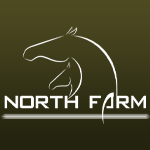Showmanship is often called a dance between the horse and its exhibitor. It has to have a rhythm, a flow, a cadence to make it look effortless. Perfect timing, with the exhibitor and the horse moving as one throughout a series of a maneuvers working accurately, smoothly and precisely. When you see a team executing a pattern together like this, you know they’ve put in the work. They’ve studied the rulebook and understand the correct presentation and position of the exhibitor and the horse.
However, what are some of the unwritten rules of showmanship that you won’t find in the rulebook? How can you elevate your performance and patterns to reach the next level? We’ve put together five unwritten rules of showmanship to keep in mind the next time you are standing at the cone.
Don’t discount the setup and inspection
In the rulebook, the class is officially called Showmanship at Halter. Often the “at Halter” portion is dropped, but that doesn’t mean that the setup and inspection are any less important. Everyone knows their horse needs to be setup squarely and appropriately groomed. However, it is the small details that turn this part of the pattern into a credit-earning maneuver. Be sure your timing is perfect on your crossovers – don’t be early or late. Practice these at home, so you know where your feet are going and it becomes automatic to you. The horse’s turnout should be immaculate, down to the fit of the halter and picking out hooves, so they are clean when you trot away from the judge. It is attention to the small things that will add up and pay off.
Be correct, then add speed
It can be quite impressive to watch an exhibitor trot, stop, turn and back with lightning speed. However, if your horse steps out of a turn, no matter how fast it is, you are not moving up on a scorecard. While it may be difficult or feel slow, especially with a green horse, it is crucial to be correct first and then add speed later. Keep in mind that showmanship should have a rhythm and a flow. Be sure all maneuvers have a consistent speed, even if that means slowing down on some and working to speed up others. You want the pattern to feel like it goes together, not like it was pieces of different patterns put together.
Footwork is important
Pay attention to your footwork and your horse’s footwork. Make sure to “close” every maneuver. For the exhibitor, that means putting both feet together solidly and confidently on your stops, crossovers and turns. For your horse, that essentially says the same thing. You want your horse to stop squarely underneath him whether you are walking, trotting, turning or backing. If you have a leg too far forward or too far back, you may be setting yourself up for a problem when you go to start your next maneuver. Matching your feet to what your horse’s feet are doing will make for a prettier, more fluid picture overall.
Don’t make your weakness a bigger deal than it should be
The great thing about the pattern classes is that you can still win the class with one maneuver that isn’t a check plus or plus. Don’t dwell on what you don’t do well and show off what you do well. Perhaps your back-up gets a little crooked towards the end, or your horse doesn’t trot a square corner without a bit of resistance. We all have weaknesses and horses have physical limitations. Focus on the maneuvers that you can shine with and practice hard to improve the ones that need a little work.
Be a natural showman
Showmanship can get artificial and quite honestly, a little awkward to watch if you don’t pay attention to what your body is doing. Being a natural showman isn’t as easy or natural as it should be but with some practice, it can feel more comfortable. Jogging heel to toe while stretching up through your core and shoulders can help lessen the “squat” position. Keeping tight fists on your lead will help to keep your arms steady while you bend your elbows. The best way to adjust your body position is to practice (even without a horse) in front of a mirror. You may feel like your elbows are tight to your body or that your showmanship run feels natural, but once you see it, you may want to make some adjustments. Genuinely enjoying the class and being confident can help bring out a natural showman in any exhibitor.
About the Author – Julie Hoefling was born and raised in Akron, Michigan but now resides in Cave Creek, Arizona with her husband, Jerry. She works at Kahala Brands as a Director of Marketing. Julie shows her horse, Shady Impulse in the Western All-Around events under the guidance of Ryan and Andrea Kail.









